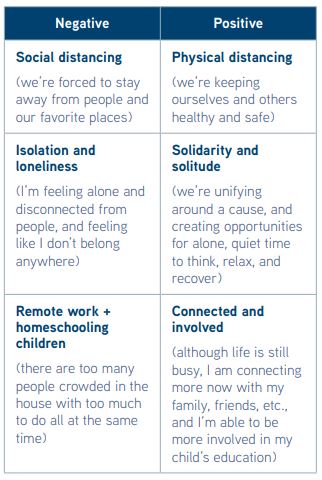
No way around it — COVID-19 has turned the world upside down, and with it our normal lives. Between taking care of students’ academic and social-emotional needs and our families’ health and well-being, there’s often no time to address our own stress and mental and physical needs.

But much like you would put an oxygen mask on yourself before putting one on a child, you need to be in good shape so you can help those around you.
According to a WestEd brief on self-care strategies for educators, “In order to support others, educators must support themselves first. In fact, … self-care is considered an ethical imperative.”
So, how should you tackle self-care? California’s surgeon general offers a “playbook” on stress relief during COVID-19, which suggests six self-care areas to address to manage stress:
- Safe, stable and nurturing relationships, which can protect our brains and bodies from the harmful effects of stress and adversity.
- Healthy nutrition.
- Regular exercise.
- Restful sleep.
- Practicing mindfulness.
- Mental health care, which can help decrease stress hormones and improve health.
The playbook contains helpful checklists to set goals and focus on these categories. The “Self-care planning” checklist, for example, contains such items as:
I’ve set a goal of…
- Building my stress-busting routine.
- Limiting screen/news time to less than __ hours per day.
- Making a plan for what to do when I’m feeling stressed out, angry, or overwhelmed.
- Planning with my partner, friends, or family to get support when I need it.
- Identifying my strengths and learning more about building resilience.
The “Supportive relationships” checklist includes:
I’ve set a goal of…
- Spending more high-quality time with loved ones.
- Having regular meals together with my household or virtually with those outside my household.
- Having regular “no electronics” time for us to talk and connect with each other.
- Making time to call or video-chat friends and family to maintain a healthy support system for myself.
- Connecting regularly with members of my community to build social connections.
The WestEd brief recommends ways educators can incorporate effective self-care into their lives by establishing healthy mindsets and behaviors. Here are a few excerpts.
Be optimistic and solution-focused

- Take a solution-focused approach. You might do so through conversations or by individually considering alternative solutions, challenging previously held beliefs, considering perspectives outside the self or immediate group, or reframing issues.
- Shift from pessimism to optimism. Focus on what you like and want, rather than on all the things you don’t like or want.
- Practice reframing. When faced with challenging new situations, distinguish the positive aspects from the negative (see table).
- Look for opportunities in the challenges. Search for meaning and lessons within the challenges and uncertainties.
- Show gratitude. Practicing gratitude can begin to shift your perspective from pessimism to optimism.
- Demonstrate compassion.
- Have compassion for yourself as well. Be kind to yourself. Try not to judge and shame yourself.
Foster openness, flexibility, adaptability and humor
Mindsets that are critical for remaining calm, thinking clearly, and making conscious choices can be developed and improved in various ways:
- Take physical and mental breaks. These include breaks from screens of all kinds — computers, phones, televisions, etc. Breaks can also include moving from one room to another or shifting your position in a room or moving from indoors to outdoors.
- Find opportunities for humor and laughter.
- Engage in mind-body activities.
Healthy boundaries and interactions
Establishing clear and healthy boundaries can support health and wellness for all. Some people need more connection and interaction, while others need more quiet time and solitude. Understand what you need and clearly communicate that to others.
- Attend to physical and social boundaries. Find a place where you can be alone at least once per day. Communicate when you need space. Communicate when you need more connection.
- Set boundaries for work. Create communication norms and expectations — for yourself, colleagues, students and families. Create clear and consistent messaging to students and families. Be clear about when you are and are not available.
Paying attention to your physical and psychological health and wellness and taking an active role to improve them are the best ways to continue to educate and support those who depend on you.
Resources
“California Surgeon General’s Playbook: Stress Relief During COVID-19”: covid19.ca.gov/manage-stress-for-health
“Self-Care Strategies for Educators During the Coronavirus Crisis”: wested.org/resources/self-care-strategies-for-educators-covid-19
Well-regarded meditation and sleep app Headspace now offers free access for K-12 educators: headspace.com/educators
When to Seek Help
It’s normal to feel some anxiety during these times, and friends, family and colleagues can be great sources of support. Those who are experiencing intense and prolonged feelings of depression and anxiety — especially if it affects daily functioning — should seek professional help.
For immediate help:
- The National Suicide Prevention Lifeline: 800-273-TALK (8255)
- To reach a crisis text line, text HOME to 741-741
- Substance Abuse and Mental Health Services Administration (SAMHSA) disaster distress line: 800-985-5990